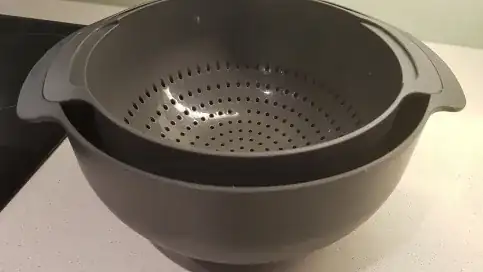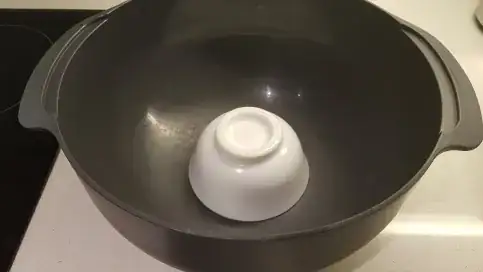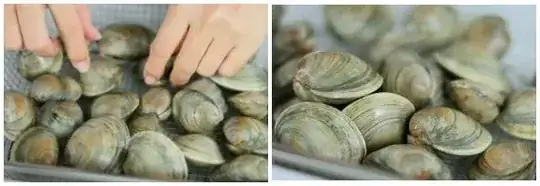I will try to expand on/clarify Max's answer using some pictures I just took.
The goal is to place the mussels in a permeable container (i.e., a container that lets water and grit pass through), inside a larger container filled with water. You want the smaller container to not touch the bottom or sides of the larger container, so that the mussels do not sit in their ejected grit.
An ideal setup is something like this, where the colander and large bowl fit together nicely with some separation:*

However, if you do not have two containers that fit together nicely, you just need to suspend your colander/sieve/wire rack in the bowl in some other way. For example, you can put a small dish or bowl upside down in the larger bowl:

And then place a sieve on top of the small bowl:**

You could come up with any number of more or less elaborate ways to raise the sieve inside the larger bowl (I wanted to show an example using butcher's twine, but could not find mine). The principle remains the same.
(*) The colander here might not actually be an ideal choice, as fairly large parts of it are not holes. Thus, grit might get caught in the colander rather than falling out.
(**) Note that as you can see in this picture, the sieve now sticks out above the larger bowl. If I were to actually use this method, I would use a shallower small bowl, or a deeper big bowl, and make sure that all mussels are submerged in either case.



